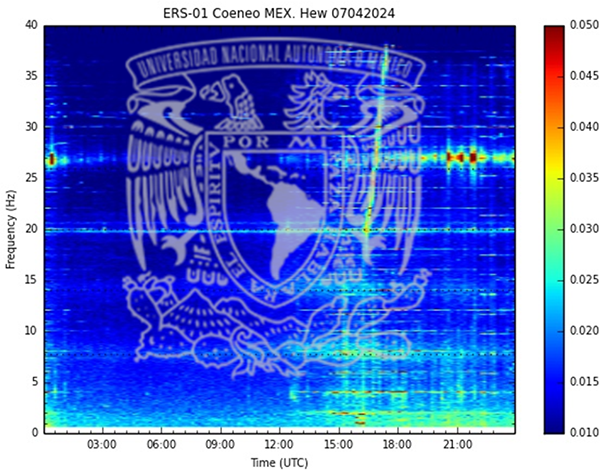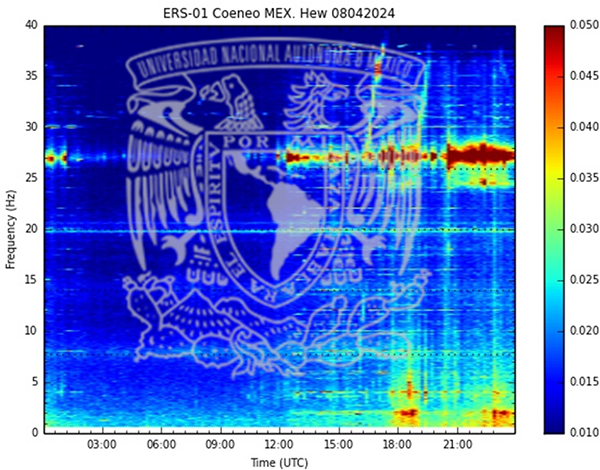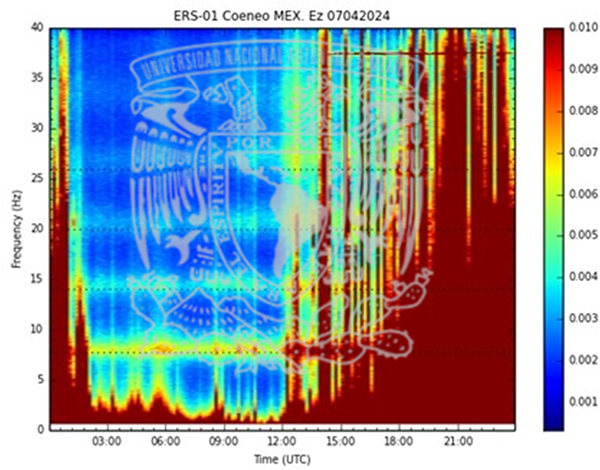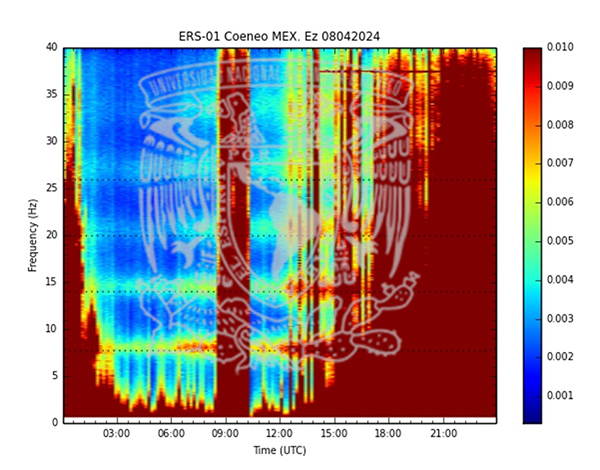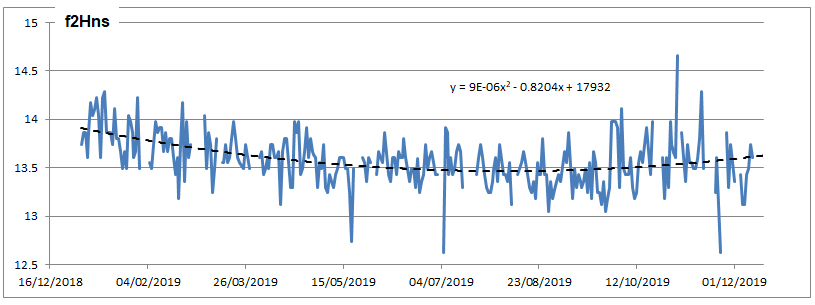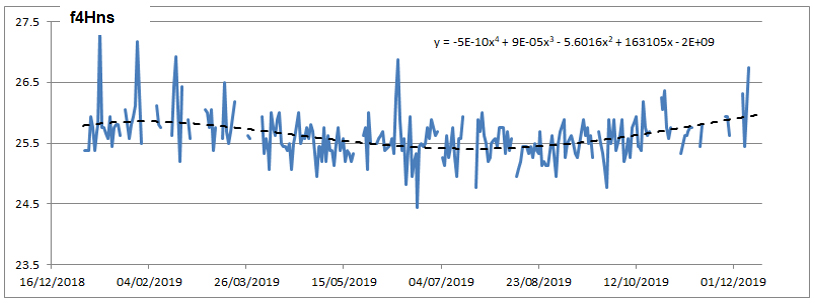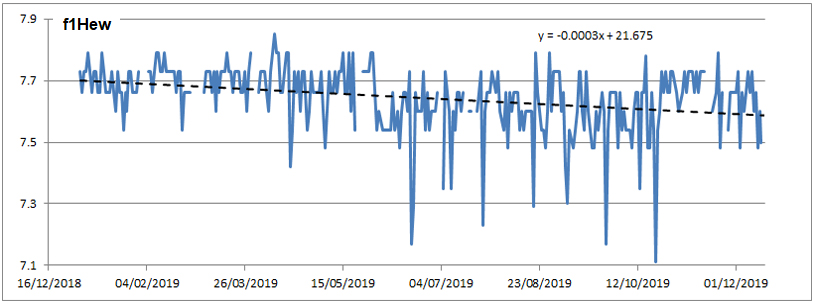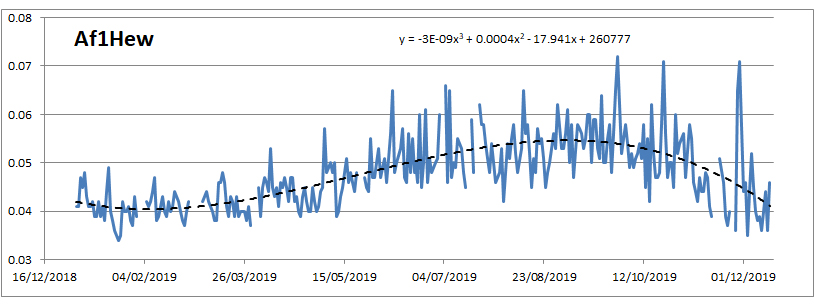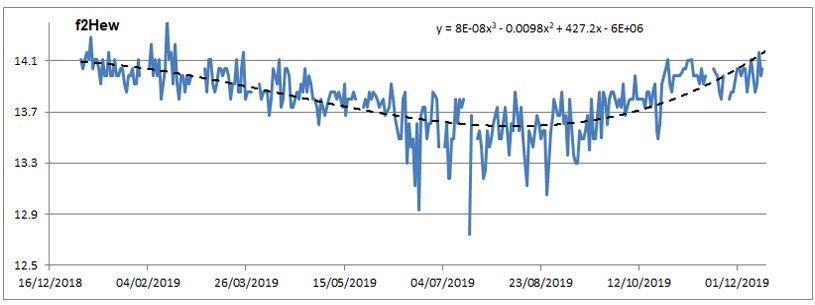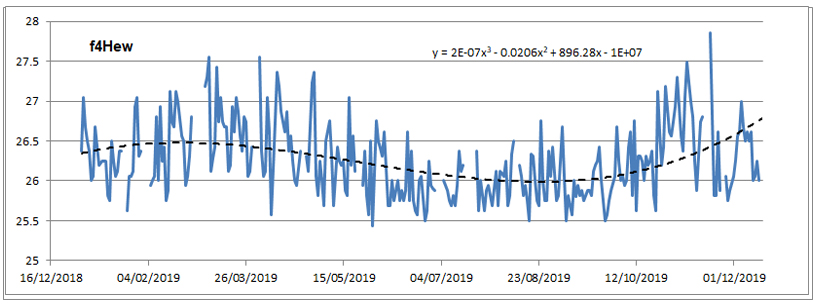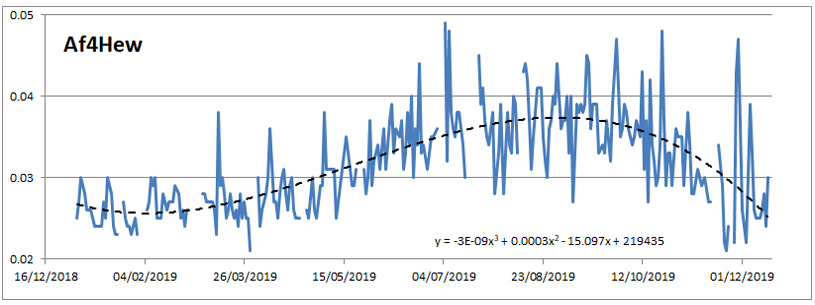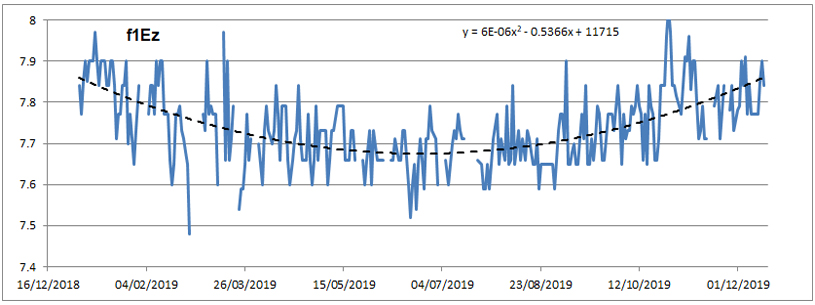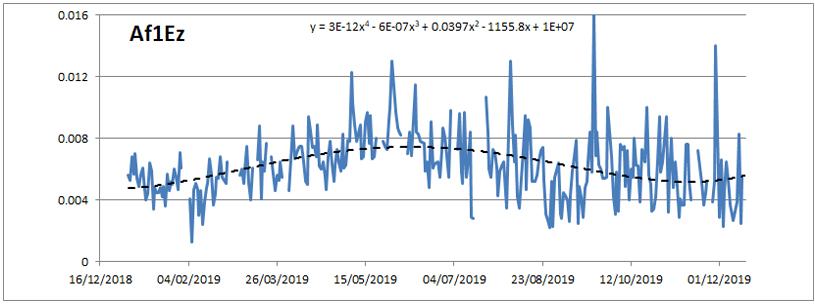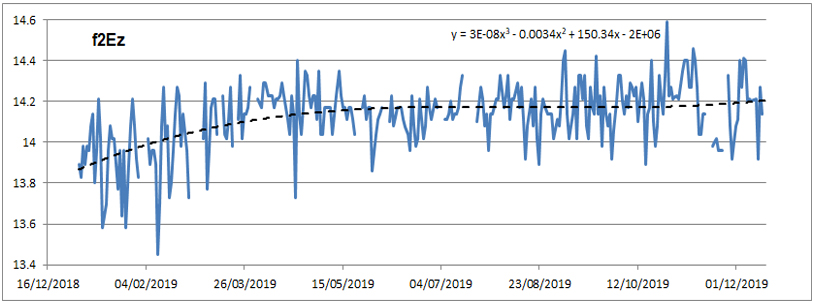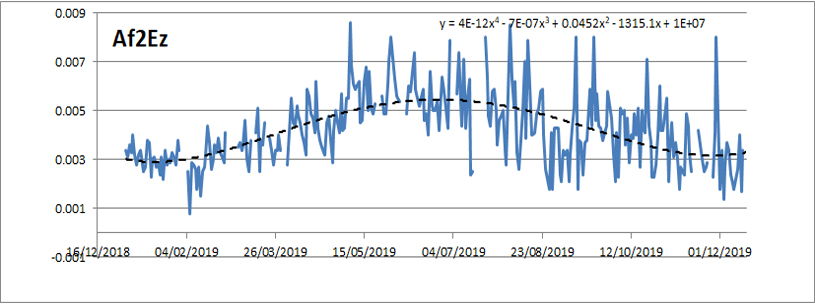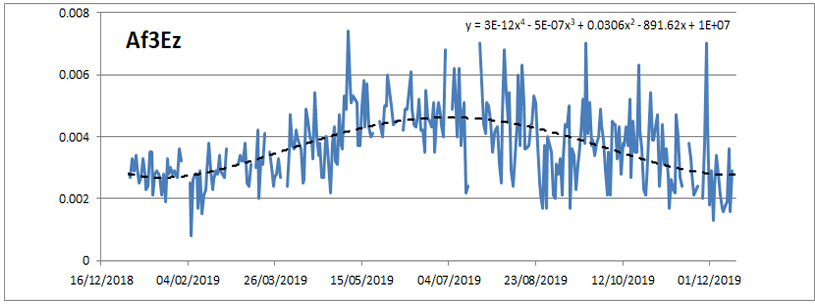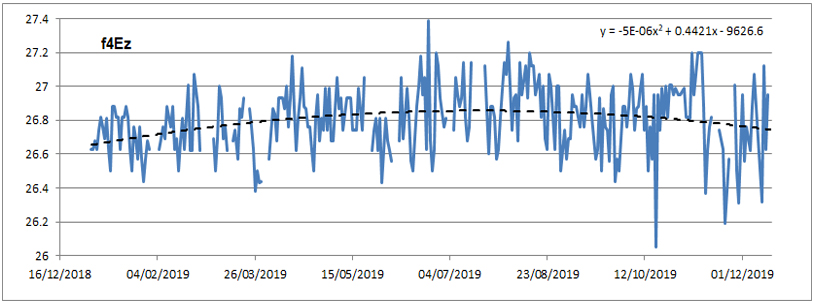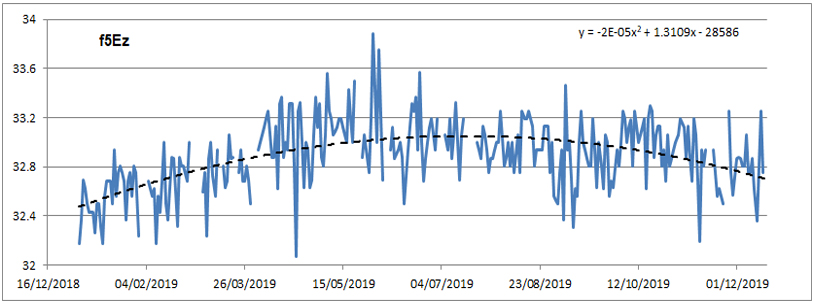About
The station is currently in operation in Mexico (Latitude 19º 48 '19 ª N, Longitude 101º 41 '39 · W). This station is the first of its kind in the region that includes Mexico, the Caribbean and Central America. The station has two inductive antennas, one for each horizontal magnetic field component, also a vertical antenna that detects the electric field. We measure the first four Schumann resonance harmonics.


Historical data bank
To have access to the data generated by the station, please write an email to Marni Pazos PhD, marni@unam.mx requesting the data of your interest, the station has records since 2014.
Please consider that the size of a raw data file per day is approximately 360 MB.
Features
The phenomenon known as the Schumann resonance (SR) was hypothesized in the 1950s. The space between the Earth's surface and the lower ionosphere forms a capacitor, the Schumann-resonance signals being the electromagnetic resonances of this cavity. These signals are measured in the extremely low frequency (ELF) band of --0 Hz to 50 Hz. The Schumann-resonance frequencies are given by the following equation:

where fn is the corresponding harmonic, a is the Earth 's radius, and c is the speed of light. The fundamental mode is 10.6 Hz, and the first four harmonics are at 18.4 Hz, 26 Hz, 33.5 Hz, and 41.1 Hz. The first definite experimental confirmation of the Schwnann resonance was obtained by Balser and Wagner (1960), showing spectral peaks near 7.8 Hz, 14.2 Hz, 19.6 Hz, 25.9 Hz and 32 Hz. The Schumann-resonance variations are caused by global atmospheric lightning, and geophysical and solar activity. The Schumann resonance presents clear daily and seasonal changes. The study of the Schwnann resonance has become very important, as these signals can monitor seismic events, climate, the ionosphere, solar activity, or could even impact human health.
Gallery
Image collection



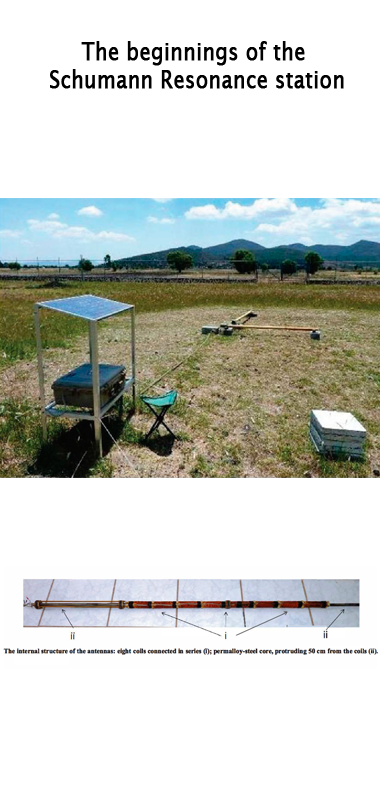
Team
The work team of the Schumann Resonance station is made up of 5 people

Blanca Mendoza

Marni Pazos

Pablo Sierra

Ernesto Andrade

Daniel Rodríguez
Contact
For any information related to the Schuman Resonance Station or about the data generated by this, please write an email to:
Marni Pazos PhD,
marni@unam.mx



